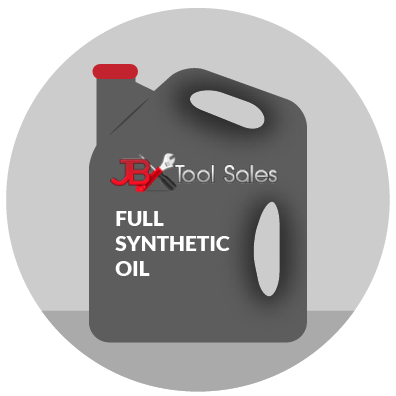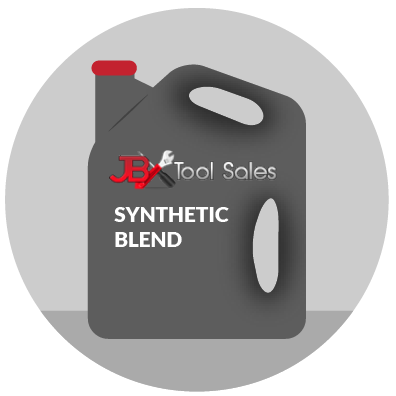Understanding Motor Oil Viscosity
19th Apr 2016
For the average car driver, the terminology used within the car industry can be equivalent to a foreign language. Your mechanic will sometimes try to break things down for you, but at the end of the day, most people will not have a very good idea of what any of the terminology really means.
In some cases, this is acceptable. After all, there are many areas to maintenance that most car owners will simply never have to worry about handling themselves. But there are some aspects to car maintenance that are within just about anyone’s grasp. Tire changes, windshield wiper changes, windshield wiper fluid -- all of these are simple fixes that every car owner should learn to take care of themselves.
Motor oil, however, is one area that many car owners could take care of themselves, but most choose not to. If, however, you are finally taking the dive into changing out your own oil, you’ll probably get confronted with some uncomfortably complicated numbers, terms and charts. The key to all oil is its viscosity, a scientific concept that you’ll likely want broken down into some more palatable pieces. Hopefully, the next time you look at a fuel oil viscosity chart, you’ll know exactly what the information means.
Oil Viscosity Explained
![]() Viscosity itself is a fairly simple concept to understand: viscosity
deals with a
fluid’s ability to resist flowing . How does a fluid resist flowing? Think of any fluid you know that flows slowly. What’s the key difference in flow rate between, syrup and water?
It’s the
stickiness. Syrup is a more
viscous fluid than water, and therefore flows much more slowly than water. It
resists flowing due to its composition. Fluids with larger molecules in them
tend to flow less, particularly when those molecules are highly attracted to
each other and bond well. For syrup, it’s the carbohydrates in the form of
sugars (fructose, glucose) that bond well and help slow that liquid down. The
viscosity of the material also means that it is impacted by
heat differently, with higher viscosity
equating to more energy input required to make it flow more. Even water flows
faster when heat is applied!
Viscosity itself is a fairly simple concept to understand: viscosity
deals with a
fluid’s ability to resist flowing . How does a fluid resist flowing? Think of any fluid you know that flows slowly. What’s the key difference in flow rate between, syrup and water?
It’s the
stickiness. Syrup is a more
viscous fluid than water, and therefore flows much more slowly than water. It
resists flowing due to its composition. Fluids with larger molecules in them
tend to flow less, particularly when those molecules are highly attracted to
each other and bond well. For syrup, it’s the carbohydrates in the form of
sugars (fructose, glucose) that bond well and help slow that liquid down. The
viscosity of the material also means that it is impacted by
heat differently, with higher viscosity
equating to more energy input required to make it flow more. Even water flows
faster when heat is applied!
When thinking about oil viscosity, it’s good to frame things in these terms. After all, there are reasons why we do not simply use water to help lubricate the parts in our engines. Outside of the potential for rust, water is simply not sticky enough to coat engine parts and keep them from rubbing together so much that they tear themselves to pieces. All mechanical equipment in a car experiences wear and tear through use. Viscous materials, such as engine oil, help slow down that process and extend the life of the car and its parts.
Oil Grades
Engine oil will come in two different grades: single grade or multi-grade. Single grade oils and multi-grade oils primarily differ in their ability to help an engine start. When you turn the key, the engine begins to move, and the oil begins to flow. In colder weather conditions, an oil’s ability to flow even under cold temperatures can be important. Multi-grade oils are typically designed to work in colder temperatures. Meanwhile, single-grade oils are designed to work at normal-to-hotter temperatures. What you’ll find is some cross-over for multi-grade and single grade oils. However, you will find that single grade oils tend to have a smaller temperature range, and most single grade oils cannot work at very low temperatures. Alternatively, multi-grade oils will have a wider temperature range in which they can work, but will have a lot more additives which may or may not be good for your car’s engine. When looking at a gear oil viscosity chart, you’ll be able to easily identify which oils are multi-grade and which are single grade. The reason single grade oils exist is because there was a time when oils were rated either for winter, or summer, but not both. Multi-grade oils were invented so that oil did not need to be changed as frequently.
How to Read Viscosity Grades and Interpret “The Donut”
![]() Now that you have had oil viscosity explained in more common
terms, it’s time to get into the real nitty gritty. The
Society of Automotive Engineers (SAE) created a classification
system for oil viscosity that anyone looking to buy engine oil should be aware
of. Any fuel oil viscosity chart you see will have an SAE viscosity number. You
may see this number presented in one of two ways. For a single-grade oil, the
viscosity number will read
SAEXX
(with XX being the number). For example: SAE30. For multi-grade oils, you will
see a format that looks slightly different. It will read something like this:
XW-XX. An example of this could be:
5W-40.
Now that you have had oil viscosity explained in more common
terms, it’s time to get into the real nitty gritty. The
Society of Automotive Engineers (SAE) created a classification
system for oil viscosity that anyone looking to buy engine oil should be aware
of. Any fuel oil viscosity chart you see will have an SAE viscosity number. You
may see this number presented in one of two ways. For a single-grade oil, the
viscosity number will read
SAEXX
(with XX being the number). For example: SAE30. For multi-grade oils, you will
see a format that looks slightly different. It will read something like this:
XW-XX. An example of this could be:
5W-40.
When looking at a bottle of engine oil, you may also a circular label shaped like a donut. This donut will have several important features: the SAE viscosity number, the API service rating and any resource or energy conservation notations. The American Petroleum Institute (API) certifies all motor oils sold within the United States.
Each class of oil is assigned a simple code that determines whether or not that oil meets Original Equipment Manufacturer (OEM) guidelines. It’s important to note that there are a fair number of engine oil codes that are obsolete. This means that those engine oils should never be used in newer cars, as they can actually cause damage to the engine. Make sure to familiarize yourself with both the obsolete and current API codes to avoid using an oil that is obsolete and potentially damaging to your engine. The API’s current codes are: SJ, SL, SM and SN.
So what do all of the numbers mean? Let’s take a look. Here’s an example of a common multi-grade oil viscosity found in the middle of the donut:
None of these numbers are intuitive, so let’s break it down just a little bit. The first number here, 10, relates to the viscosity or flow required at a certain temperature. The “W”, which stands for “winter”, means that the oil is rated for winter use. The lower the number is in front of the “W”, the better its performance when starting a car in cold weather. The second number, “40” in this case, indicates the viscosity limit the oil must be at 212 degrees Fahrenheit, which is the average operating temperature of most car engines. This second number has a fixed limit. A lower number indicates thinner, or less viscous oil. Higher numbers indicate more viscosity, therefore, a higher temperature in which they can best operate. A typical gear oil viscosity chart will show the different types of numbers you may find on engine oil labels.
On the outside of the donut, you will find something like this:
API Service: GF-5/SN
The first code, “GF-5” indicates the current standard, with GF-5 the currently accepted standard for passenger car engine oils. “SN” indicates the current standard for gasoline engines.
When choosing which oil is best , check your manufacturer’s manual.
High Temperature Viscosity and Low Temperature Viscosity
The low temperature viscosity number is primarily used to indicate the lowest temperature at which point the oil will flow. Do note that the number you see (for example, 10W-40) is not the actual temperature. It only indicates a temperature range and the oil’s shear stability, which is a measure of how much mechanical stress the oil can take before losing viscosity. The reason behind the numbers can get very, very technical, so unless you are looking to really dig into the science behind engine oil viscosity, we’d suggest just knowing that lower numbers equate to lower temperatures, and higher numbers relate to higher temperatures. This is true for both the high temperature viscosity, and the low temperature viscosity. An oil viscosity conversion chart will give you an exact temperature for each of the high and low ranges for oil classification codes, however.
Oil Additives
As stated earlier, multi-grade oils use additives in order to achieve wider viscosity ranges at different temperatures. Most every oil viscosity vs temperature chart will help break down just what those ranges are. Every multi-grade oil will mimic single grade oils in what it can do on both ends of the temperature spectrum. The additives inserted into motor oils, called viscosity improvers, are meant to help the oil expand at warmer temperatures to avoid thinning when heat is added and to keep the oil from becoming unable to pump at lower temperatures. An inability to pump at low temperatures would prevent it from actually helping the engine to start.
There are also a number of additives meant to enhance engine performance and do other beneficial things to the engine:
- Viscosity
Index and Viscosity Index improvers
Oil’s viscosity index is a measure of how much it changes in viscosity as the temperature changes. It’s good to think back to the earlier explanation of viscosity using syrup and water. As oil gets hotter, its viscosity goes down and it becomes thinner and flows easier and faster. As the temperature goes down, it gets thicker and flows slower. All oil reaches a low temperature at which it simply does not flow, and reaches a high temperature at which the oil will get so hot it will start to degrade. Viscosity index improvers are additives that help stabilize these numbers by improving either an oil’s lower range, higher range, or both. All multi-grade oils utilize viscosity index improvers in order to achieve wider temperature ranges than what can’t be seen with single grade oils. An oil viscosity conversion chart will likely show the differences in viscosity between oils with and without additives.
- Detergents
These additives are inserted into engine oil to help clean out impurities which would otherwise gunk up the oil and lower the overall life and usefulness of the oil. This often means additives that help neutralize rust deposits common with corrosion.
- Dispersants
Dispersants are materials inserted into the oil to help keep the oil clean. While detergents help break down and neutralize potentially harmful buildup in the oil, dispersants are inserted to help keep harmful materials from grouping together.
- Antiwear
additives
Antiwear additives are inserted into engine oil to help prevent engine components from rubbing together. These work by chemically attaching to the metal surface and creating a coating that helps protect the surface of metal parts.
- Friction
modifiers
Friction modifiers are additives that help reduce surface friction on engine parts. Working in conjunction with antiwear additives, they help prevent metal-to-metal contact and overall wear and tear.
- Pour
point depressants
Pour point depressants (or PPDs) are additives that lower the temperature at which a liquid can pour. These are added to make multi-grade oil better at lower temperatures.
- Antioxidants
Antioxidants are materials added to engine oil that slow the oxidation of the oil. Oxidation is a natural process that occurs in oil as it comes in contact with oxygen, and leads to degradation of the chemicals in the oil.
- Foam
inhibitors
One of the drawbacks of using lubricants in motor oil is that they trap air in the oil, which rushes oxidation. Foam inhibitors are materials added to engine oil that reduce excessive foam buildup.
- Rust/corrosion
inhibitors
Rust/corrosion inhibitors are chemicals that are added to oil to help prevent metal parts in the engine from rusting.
- Friction
modifiers
These chemical additives are mixed into engine oils in order to enhance the effectiveness of the lubricants. Friction modifiers make the surface area of the lubricant softer and less likely to rub off upon light contact with other surfaces.
Drawbacks of Viscosity Improver Additives
While additives that enhance the viscosity in engine oil do give the oil a wider operational temperature range, they can also come with some distinct drawbacks. As additives are placed into the oil, the oil life can be impacted. More additives in the oil means there is less oil as a percentage of the overall liquid content. Similarly, some additives can lessen the effectiveness of other oil features, resulting in a product that may do a lot of things marginally well, instead of one or two things very well.
Different Types of Oil
Understanding viscosity is only the first step in getting the right oil. If you’re shopping for a good oil to use in your car, you’ll notice that they come in different varieties:
-
 Full
Synthetic
Full
Synthetic
Synthetic oils are the best for high end, specialized engines. They’re also the most expensive. Synthetic oils have a high litmus test that they must pass in order to be certified and all fully synthetic oils are labeled as such. These oils will have the best performance on almost all categories, but are not required for most cars. These oils will also have the most additives, adding to their increased expense.
-
 Synthetic
Blend
Synthetic
Blend
These oils blend conventional oil with some synthetic oil in order to create a high-quality blend that is better than a premium conventional oil, but not as good as a full synthetic. The benefit of this oil is that is does have a wider temperature range, and has some of the additive benefits of synthetic oil. These oils will typically sell at a noticeably higher cost than conventional oils, but will be much cheaper than full synthetic oils.
-
 High-mileage
High-mileage
These oils are targeted to engines a lot of miles on them. High-mileage oils differ primarily in their use of seal conditioners which are meant to help improve the life of engine seals, which may grow brittle as they age.
-
 Premium
Conventional
Premium
Conventional
Premium conventional oil is common among dealerships and is more often used in newer cars. These oils are a slight upgrade over conventional oils, usually offering a wider viscosity index than most conventional oils.
-
 Conventional
Conventional
Conventional oils are the cheapest and most widely used by dealerships. These oils meet API and SAE standards, but will have a limited number of additives included.
The best bet for picking any oil is to check your manufacturer’s manual first before deciding whether you need an expensive synthetic oil, or whether a conventional oil will add the most benefit to your car. It’s important to understand that while most cars on the road can synthetic oil, not all cars can effectively use conventional oil. A car that is designed for synthetic oil should always be used with synthetic oil. Not doing so will eventually lead to engine damage.
Related Reading: The Ultimate Guide to Motor Oil
Sources:
http://www.pqiamerica.com/apiserviceclass.htm
http://www.driverstechnology.co.uk/oils.htm
https://en.wikipedia.org/wiki/Motor_oil
https://en.wikipedia.org/wiki/Oil_additive
https://en.wikipedia.org/wiki/Oil_additive
http://www.viscopedia.com/viscosity-tables/substances/engine-oil/
http://www.synforce.com.au
http://www.popsci.com/science/article/2010-05/how-do-oil-dispersants-work

